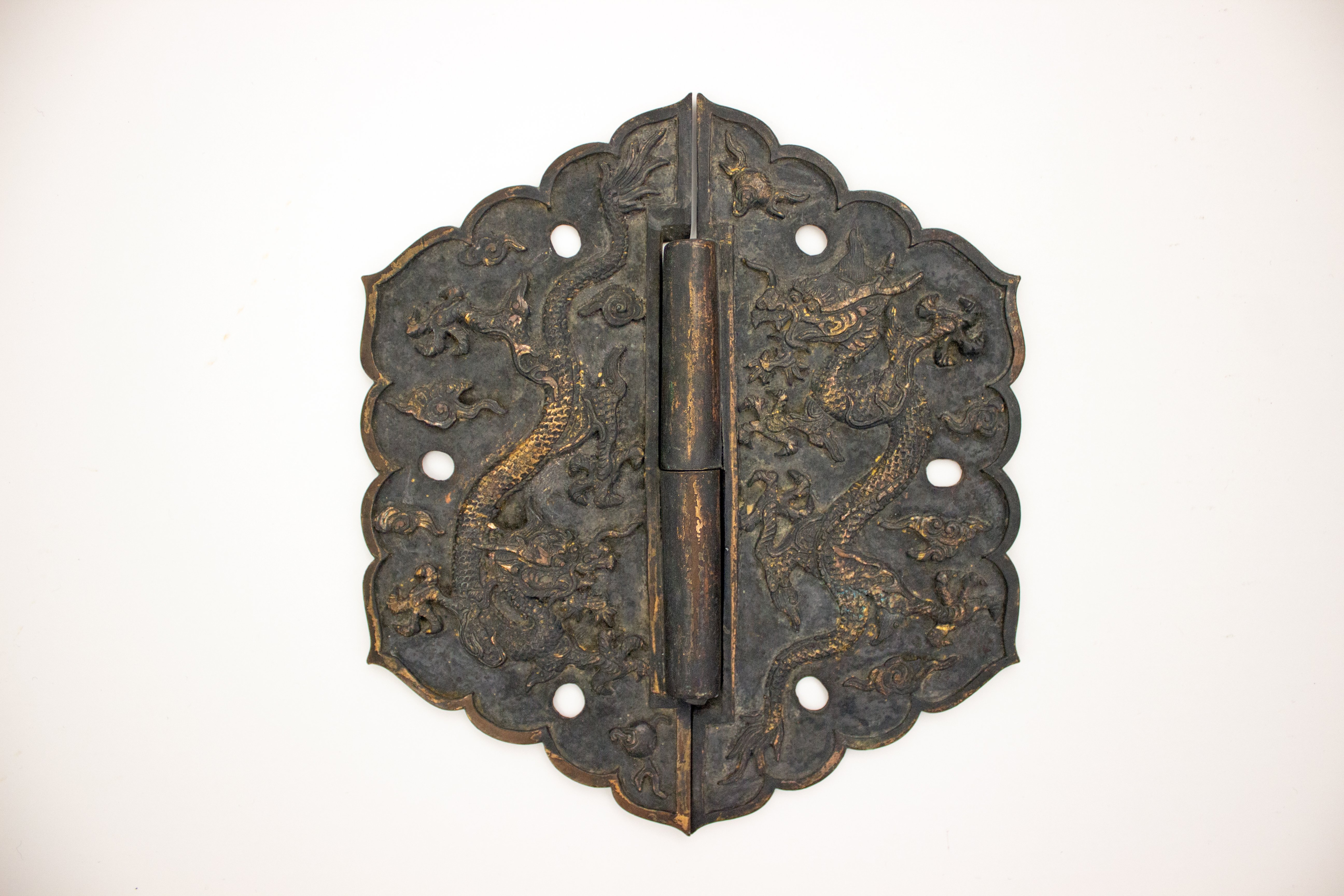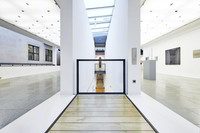A door hinge from China that consists of a hinge in the middle and two symmetric fittings on the sides. The fitting has a hexagonal basic form. Its edges are constructed wave-like. The hinge has six holes for the mounting and is provided on both sides with a dragon motif and further smaller decorative elements. The dragons are arranged conversely to each other in their position of head and tail. By means of the hinge, the two sides can be folded. On the backsides there are Chinese characters engraved.
The door hinge is made from bronze and painted black. However, there are remains of a layer from beaten gold. Probably, the bronze hinges were originally provided with an oil gold plating and later was provided with monochrome painting in black.
The object was a gift from the field hospital superintendent Johann Jakob Keidel to the Gewerbemuseum (Museum of Applied Arts) Ulm in 1921. From 1900/1901 on Keidel was deployed in the field hospital in Tianjin (Tientsin) in the garrison of the Ostasiatische Expeditionskorps (East Asian expeditionary corps), since 1901 called Ostasiatische Besatzungsbrigade (East Asian occupation brigade) and was therefore involved in the military operation of the German Empire in the Boxer Rebellion. During his two-year lasting stay in China, he collected different items, including Chinese pieces of clothing and tools or bullets from the context of the combat actions. He obtained the objects i. a. through purchase from Chinese merchants or as gifts. A selection of his collection he committed in several portions to the Gewerbemuseum Ulm as gifts or loans.
This door hinge Keidel has bought from a Chinese merchant, according to whom it was part of the side door of the Temple of Agriculture in Beijing.
en

